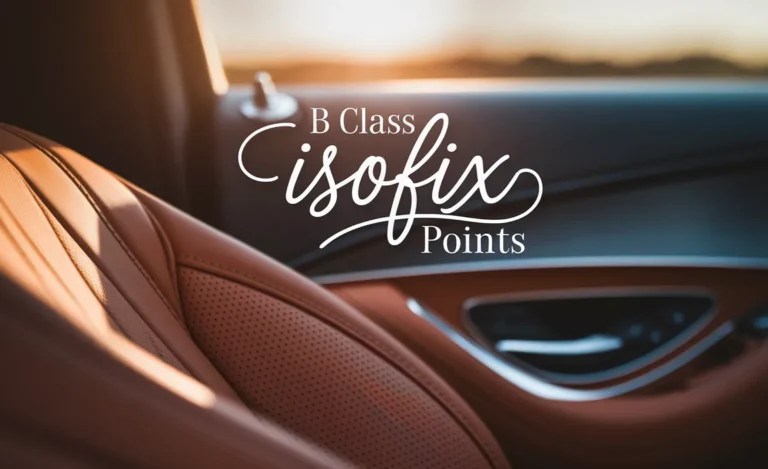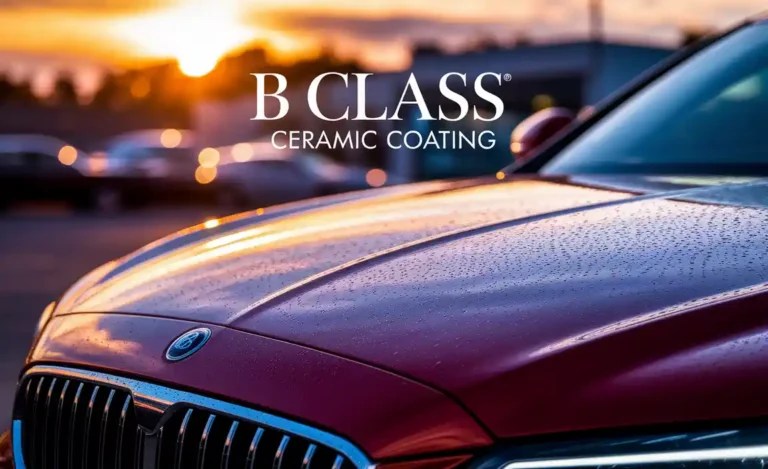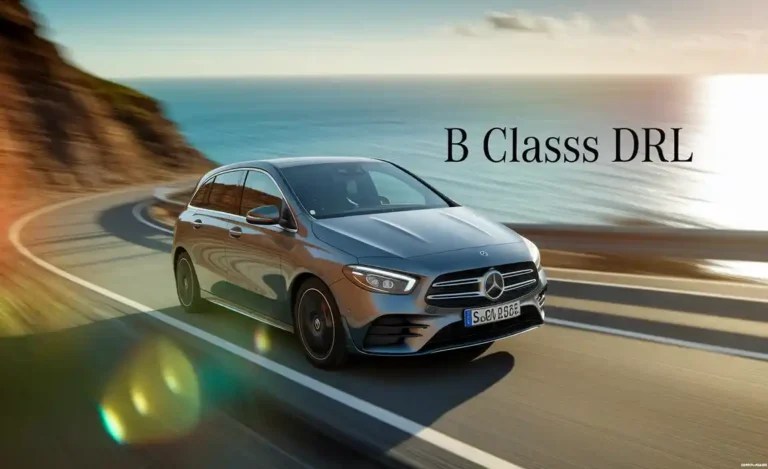B Class Crash Parts: Your Perfect Solution
Replacing B-Class crash parts is easier and more affordable than you think. Discover how genuine or high-quality aftermarket B-Class crash components offer a perfect, cost-effective solution for restoring your Mercedes-Benz to pre-accident condition, ensuring safety and aesthetics without breaking the bank.
A minor fender bender or a more significant impact can be a stressful experience for any Mercedes-Benz owner. The good news is that restoring your beloved B-Class to its former glory is entirely achievable, especially when it comes to crash parts. These essential components absorb impact energy and protect your vehicle’s core. When they need replacement, understanding your options is key. This guide will walk you through everything you need to know about B-Class crash parts, ensuring you make informed decisions for a safe and seamless repair.
We’ll explore what exactly constitutes crash parts, why their proper functioning is critical, and the various types available for your B-Class. You’ll learn about the differences between OEM (Original Equipment Manufacturer) and aftermarket options, helping you balance quality, cost, and compatibility. By the end of this article, you’ll be equipped to confidently choose the right B-Class crash parts for your repair needs.
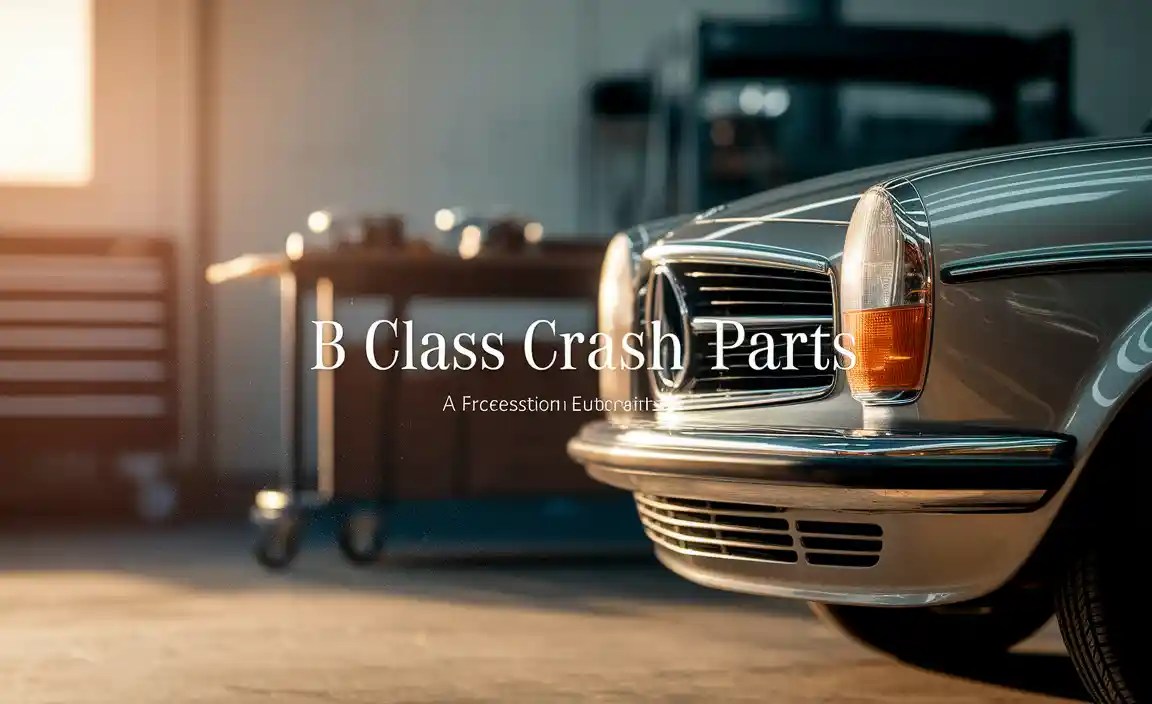
Understanding Mercedes-Benz B-Class Crash Parts
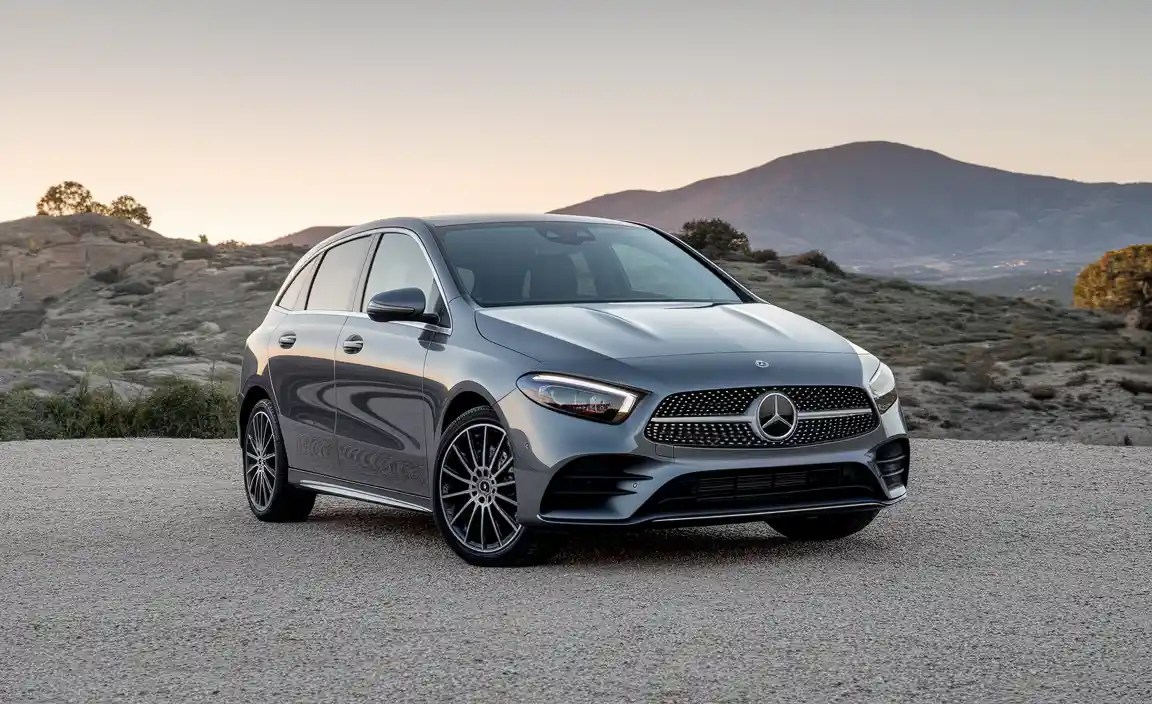
When we talk about “crash parts,” we’re referring to the exterior and structural components of your vehicle designed to deform and absorb energy during an impact. These are the elements that take the brunt of a collision, protecting the occupants and the vehicle’s vital mechanical systems. For your Mercedes-Benz B-Class, these parts are engineered to meet the brand’s stringent safety and performance standards.
Think of them as the first line of defense. They are designed to be sacrificial, meaning they are intended to be damaged so that the rest of the car, and more importantly, its occupants, remain as safe as possible. Replacement of these parts after an incident is not just about aesthetics; it’s a fundamental aspect of restoring your vehicle’s safety integrity.
Key B-Class Crash Components to Consider
Several parts fall under the umbrella of “crash parts.” For a common compact luxury vehicle like the B-Class, these typically include:
- Bumpers (Front and Rear): These absorb low-speed impacts and house various sensors for parking assistance and adaptive cruise control.
- Grilles: While primarily for airflow and aesthetics, the front grille assembly can be part of the impact absorption system.
- Headlights and Taillights: Essential for visibility, these are often damaged in impacts and require replacement for safety and legal compliance.
- Fenders (Wings): The panels covering the wheels, particularly the front ones, are prone to damage in side-swipes or front-end collisions.
- Hood (Bonnet): The main panel covering the engine compartment can be bent or creased in impacts.
- Radiator Support: This structural component holds the radiator and other front-end components. Damage here can affect cooling system integrity.
- Impact Absorbers/Reinforcements: These are often foam or honeycomb structures located behind the bumper covers, designed to crush and dissipate impact energy.
- Body Panels (Doors, Quarter Panels): While not always the primary “crash” parts, these external panels often sustain damage and need replacement.
- Chassis Components: In more severe accidents, structural elements like frame rails or suspension components may also be affected and need repair or replacement.
Ensuring each of these components is correctly fitted and functional is paramount for your B-Class’s safety ratings and driving dynamics. A compromised bumper reinforcement, for example, means less protection in a future impact.
OEM vs. Aftermarket B-Class Crash Parts: A Balanced View

When it comes to replacing crash parts, you’ll often encounter two main categories: Original Equipment Manufacturer (OEM) parts and aftermarket parts. Understanding the distinctions can help you make a decision that’s right for your wallet and your B-Class.
OEM B-Class Crash Parts
OEM parts are manufactured by Mercedes-Benz or by a supplier specifically for Mercedes-Benz. They are designed to the exact specifications of your B-Class, ensuring a perfect fit and maintaining the vehicle’s original safety and performance standards. If you want your B-Class to be “as new” after a repair, OEM is the way to go.
Pros of OEM Parts:
- Guaranteed Fitment: Engineered precisely for your specific B-Class model and year.
- Original Quality and Materials: Built to the same standards and using the same materials as the original factory parts.
- Maintained Vehicle Value: Can help retain your Mercedes-Benz’s resale value, especially if you’re aiming for a concours-level restoration.
- Warranty: Typically come with a manufacturer’s warranty.
Cons of OEM Parts:
- Higher Cost: Generally the most expensive option.
- Availability: Can sometimes have longer lead times, especially for older B-Class models.
Aftermarket B-Class Crash Parts
Aftermarket parts are manufactured by companies other than Mercedes-Benz. They are designed to be compatible with your B-Class but might not meet the exact same stringent specifications as OEM parts. The quality can vary significantly among aftermarket manufacturers.
Pros of Aftermarket Parts:
- Cost-Effective: Significantly less expensive than OEM parts, offering substantial savings.
- Wider Availability: Often easier to find, especially for popular models.
- Variety of Quality Levels: Some aftermarket manufacturers produce high-quality parts that rival OEM, while others may be more basic.
Cons of Aftermarket Parts:
- Variable Quality: Fit, finish, and material quality can differ greatly. Some may require modifications for proper installation.
- Potential Fitment Issues: May not align perfectly, leading to gaps or requiring extra labor.
- Safety Standards: Lower-quality aftermarket parts might not meet the same safety impact absorption standards as OEM.
- Warranty Concerns: Warranties can be less comprehensive or harder to claim.
Making the Right Choice
For most standard repairs, a reputable aftermarket crash part from a well-known manufacturer can be an excellent, cost-effective solution. However, for critical structural components or if you prioritize an absolutely flawless, original restoration, OEM parts may be the better investment. Always inquire about the certifications and reputation of the aftermarket brand.
A good compromise often involves using OEM for critical structural elements (like radiator supports or impact absorbers) and high-quality aftermarket parts for non-structural exterior pieces (like bumper covers or fenders). Your repair shop can often guide you on the best approach.
The Importance of Correct Installation
Even the highest quality B-Class crash parts are only effective if installed correctly. Installation is not merely about bolting on a new piece; it involves ensuring proper alignment, secure fastening, and correct integration with the vehicle’s safety systems.
Incorrect installation can lead to a cascade of problems. Misaligned panels won’t just look bad; they can affect aerodynamics, create wind noise, and potentially compromise the structural integrity of the entire front or rear end of your B-Class. More critically, improperly installed impact absorbers or bumper reinforcements can lead to significantly reduced safety performance in a subsequent collision.
What to Look for in Professional Installation
- Certified Technicians: Ensure the repair shop employs technicians trained and experienced with Mercedes-Benz vehicles.
- Proper Tools and Equipment: Collision repair requires specialized tools for alignment, welding (if necessary), and painting.
- Adherence to Manufacturer Procedures: Reputable shops will follow Mercedes-Benz’s repair guidelines for B-Class vehicles.
- Quality Control Checks: The shop should perform detailed checks after installation, including panel gaps, sensor functionality, and paint match.
- Warranty on Workmanship: A good repair facility will offer a warranty on their labor and the parts they install.
For DIY enthusiasts, it’s crucial to have a service manual for your specific B-Class model. These manuals provide detailed diagrams and step-by-step instructions. However, due to the complexity of modern vehicle safety systems (like parking sensors and adaptive cruise control sensors often integrated into bumpers), professional installation is generally recommended for crash parts.
Where to Source Quality B-Class Crash Parts

Finding reliable sources for both OEM and aftermarket B-Class crash parts is essential for a successful repair. The source can significantly impact the quality, price, and availability of the components you need.
Authorized Mercedes-Benz Dealerships
Your local Mercedes-Benz dealership is the primary source for genuine OEM B-Class crash parts. They have direct access to Mercedes-Benz’s parts network, ensuring you receive parts specifically designed for your vehicle.
Online OEM and Aftermarket Parts Retailers
Numerous online platforms specialize in automotive parts. Some focus exclusively on OEM, while others offer a wide range of aftermarket options. When choosing an online retailer:
- Verify Authenticity: Ensure OEM parts are truly genuine.
- Check Reviews: Look for customer reviews regarding the quality of aftermarket parts and the vendor’s service.
- Compare Prices: Prices can vary significantly between retailers.
- Confirm Compatibility: Double-check that the part number or description matches your specific B-Class model, year, and trim. Many sites have VIN decoders to help with this.
For instance, reputable online stores that focus on European car parts often have extensive catalogs for Mercedes-Benz. Websites like FCP Euro (for OEM and quality aftermarket) or specialized Mercedes parts suppliers can be valuable resources. Always ensure they provide clear return policies and warranty information.
Specialty Auto Parts Stores
Some larger, independent auto parts chains may carry aftermarket crash parts. While their selection for luxury vehicles like Mercedes-Benz can be more limited than online specialists, they can be convenient for common items.
Salvage Yards and Used Parts
For budget-conscious repairs, consider salvaged parts from a reputable salvage yard. However, with crash parts, it’s crucial to thoroughly inspect them for hidden damage, corrosion, or structural compromise. This option is generally best suited for cosmetic parts or if you have the expertise to assess the condition accurately. It’s usually not recommended for critical structural safety components unless their integrity can be guaranteed.
The National Highway Traffic Safety Administration (NHTSA) provides valuable information on vehicle safety, including resources related to crash parts and repair. Understanding their guidelines on parts comparability and safety can further inform your purchasing decisions.
DIY vs. Professional Repair for B-Class Crash Parts

Deciding whether to tackle B-Class crash part replacement yourself or hire a professional depends on your skills, available tools, and the complexity of the repair.
DIY Considerations
- Complexity: Replacing a bumper cover might be achievable for a skilled DIYer. However, dealing with metal body panels, structural supports, or body-integrated sensors (like parking sensors) requires specialized knowledge and equipment.
- Tools: You’ll need a comprehensive set of wrenches, sockets, panel removal tools, and potentially specialized tools for alignment or sensor calibration.
- Safety: Working with vehicle structure requires ensuring everything is reassembled safely. Improperly installed parts can compromise safety systems.
- Time and Frustration: It can be time-consuming, and encountering unexpected issues can be frustrating without expert knowledge.
- Painting: Most crash parts, especially plastic bumper covers and metal fenders/hoods, will need to be painted to match your B-Class’s original color. This is a skill that requires practice and specialized equipment.
Professional Repair Advantages
- Expertise: Collision repair specialists have the knowledge and experience to handle all types of damage, from minor cosmetic issues to major structural repairs.
- Advanced Equipment: Body shops have frame straightening machines, specialized welding equipment, and precise color-matching paint systems.
- Warranty: Professional repairs typically come with a warranty on both parts and labor, giving you peace of mind.
- Efficiency: Professionals can often complete repairs much faster than a DIYer, minimizing the time your B-Class is out of commission.
- Access to Parts: Reputable shops often have established relationships with parts suppliers, which can sometimes lead to better pricing or faster availability.
While DIY can save money on labor, the cost of tools and the risk of error might negate those savings, especially for critical safety components. For a Mercedes-Benz B-Class, where precision and integration of advanced systems are key, professional installation is often the surest path to a safe and aesthetically pleasing repair.
Common B-Class Crash Repair Scenarios

Your B-Class might encounter various collision scenarios, each requiring specific attention to crash parts. Understanding these common situations can help you anticipate repair needs.
Low-Speed Bumper Scrapes and Impacts
These often involve scuffed or cracked bumper covers, and sometimes damaged bumper absorbers or reinforcement bars behind the cover. Parking lot incidents are a common culprit. Replacement of the bumper cover and any damaged underlying components is usually straightforward, though ensuring parking sensor functionality is vital.
Fender-Bender Accidents
These typically affect a corner of the vehicle, involving the bumper, fender, headlight, and sometimes the hood. Replacing these parts requires careful alignment to ensure the body lines flow correctly and doors/hood/trunk operate smoothly. Paint matching is also crucial here.
Front-End Collisions
More severe front-end impacts can damage the radiator support, grille, hood, headlights, and potentially lead to internal damage affecting cooling or other systems. This type of repair often involves significant structural work and meticulous component replacement to restore the vehicle’s front end safely.
Side Impacts
While often involving doors and quarter panels, side impacts can also damage front or rear fenders and associated bumper components. The focus here is on restoring the vehicle’s structural integrity and ensuring all panels align perfectly.
In all these scenarios, the choice of B-Class crash parts and the quality of the repair work are paramount. Consulting repair guides and understanding the components involved, as outlined on sites like I-CAR (Inter-Industry Conference on Auto Collision Repair), can empower you to discuss repairs more effectively with your chosen shop.
Cost Considerations and Insurance
The cost of replacing B-Class crash parts can vary dramatically based on the specific parts needed, whether you choose OEM or aftermarket, and the labor rates in your area. A simple bumper cover replacement might cost a few hundred dollars for the part and installation (especially if aftermarket), while significant structural repairs involving OEM parts could easily run into thousands.
Factors Affecting Cost:
- Part Type: Structural components are generally more expensive than cosmetic ones.
- OEM vs. Aftermarket: OEM parts are typically 50-200% more expensive than comparable aftermarket parts.
- Labor: The complexity of the installation and the hours required drive labor costs. Mercedes-Benz repairs can sometimes command higher labor rates due to specialized training.
- Painting: Proper paint matching and application are skilled tasks that add to the overall cost.
- Additional Components: Often, replacing a primary crash part necessitates replacing smaller associated items like clips, fasteners, or sensors.
Working with Your Insurance
If your B-Class’s crash damage is covered by insurance, you’ll want to understand your policy and the repair process. Insurers often prefer aftermarket or recycled parts to control costs. However, if you have a specific preference for OEM parts, discuss this with your insurance adjuster. In some regions or under certain policy types, you may have the right to choose OEM, though you might need to pay a difference in cost.
Key Insurance Tips:
- Understand Your Policy: Know whether you have “original parts” or “like kind and quality” clauses.
- Get Multiple Estimates: Even if your insurer recommends a shop, you often have the right to choose your own repairer.
- Ask About Parts: Clarify with your shop and insurer what type of parts will be used.
- Inspect the Work: Before finalizing the claim, inspect the repairs to ensure satisfaction.
Navigating insurance claims and repair costs can be complex, but being an informed owner allows you to advocate for the best possible outcome for your B-Class.
Frequently Asked Questions (FAQ) about B-Class Crash Parts
What is the main difference between OEM and aftermarket crash parts for a Mercedes-Benz B-Class?
OEM (Original Equipment Manufacturer) parts are made by Mercedes-Benz or their approved suppliers, ensuring they meet the exact specifications and quality standards of your B-Class. Aftermarket parts are made by other companies and are designed to be compatible, but quality, fit, and materials can vary.
Are aftermarket B-Class crash parts safe?
This depends on the manufacturer. Reputable aftermarket brands produce parts that meet safety standards, but lower-quality options might not offer the same level of impact absorption or structural integrity as OEM parts. Always choose parts from well-vetted manufacturers.


